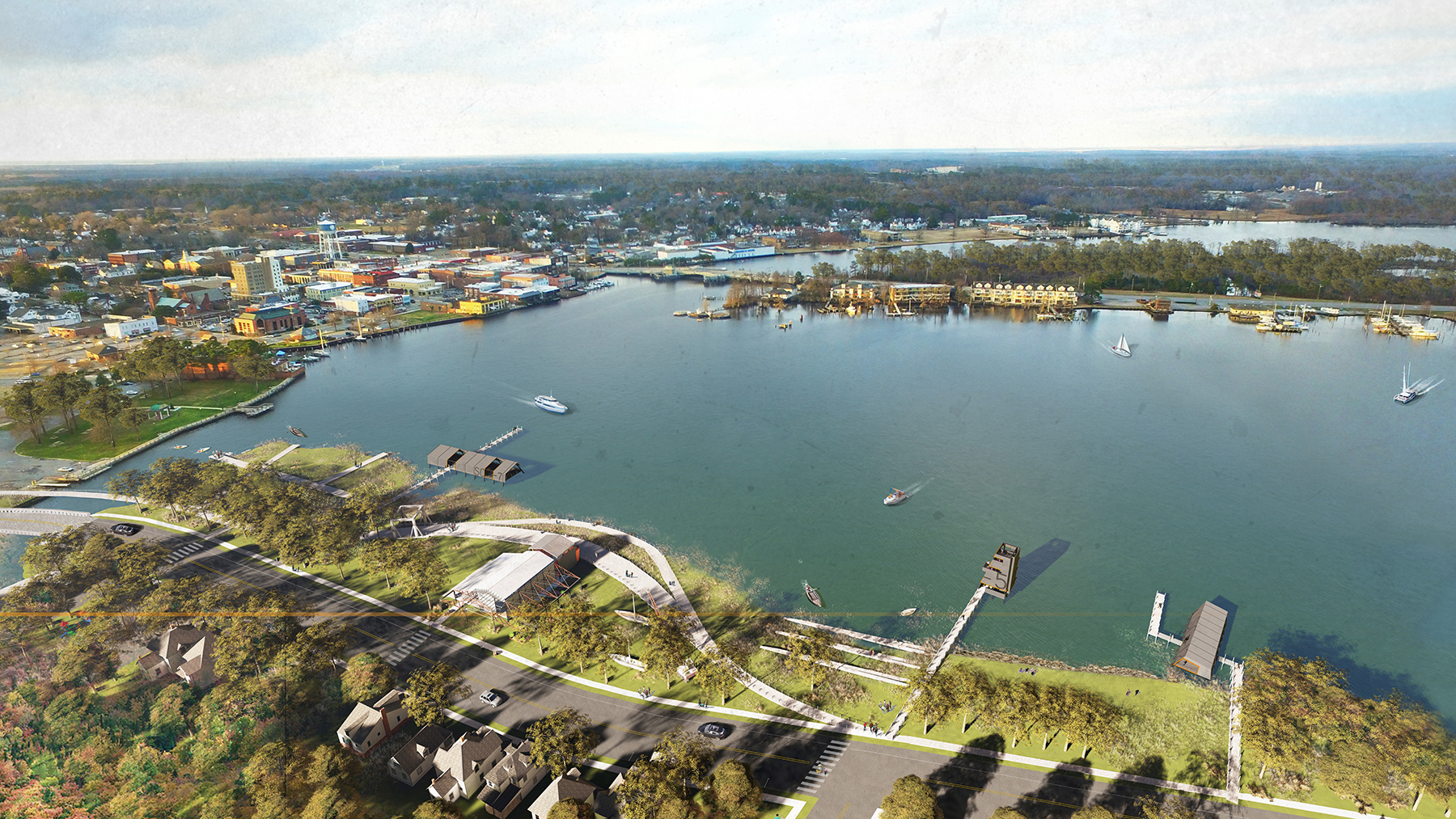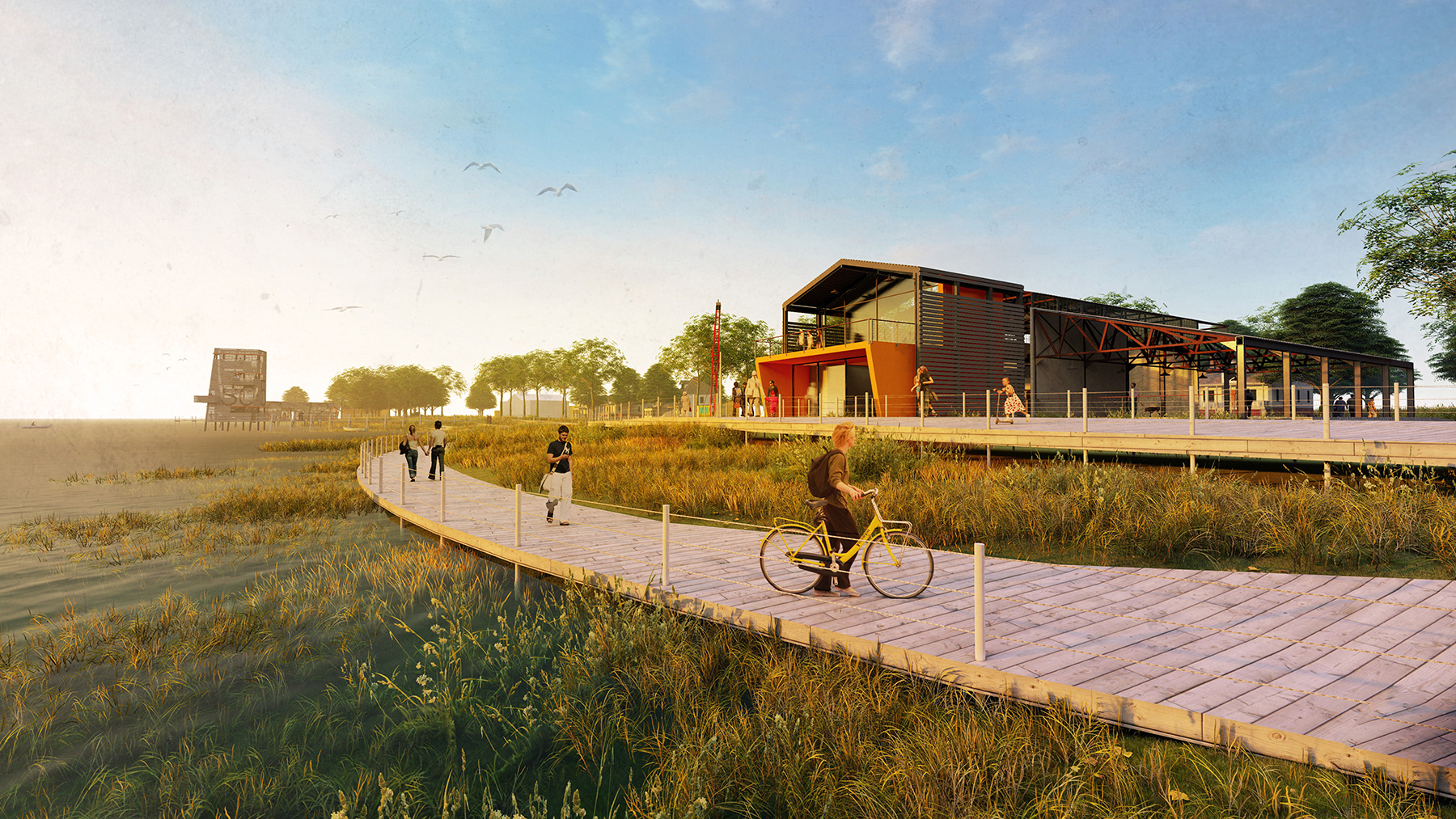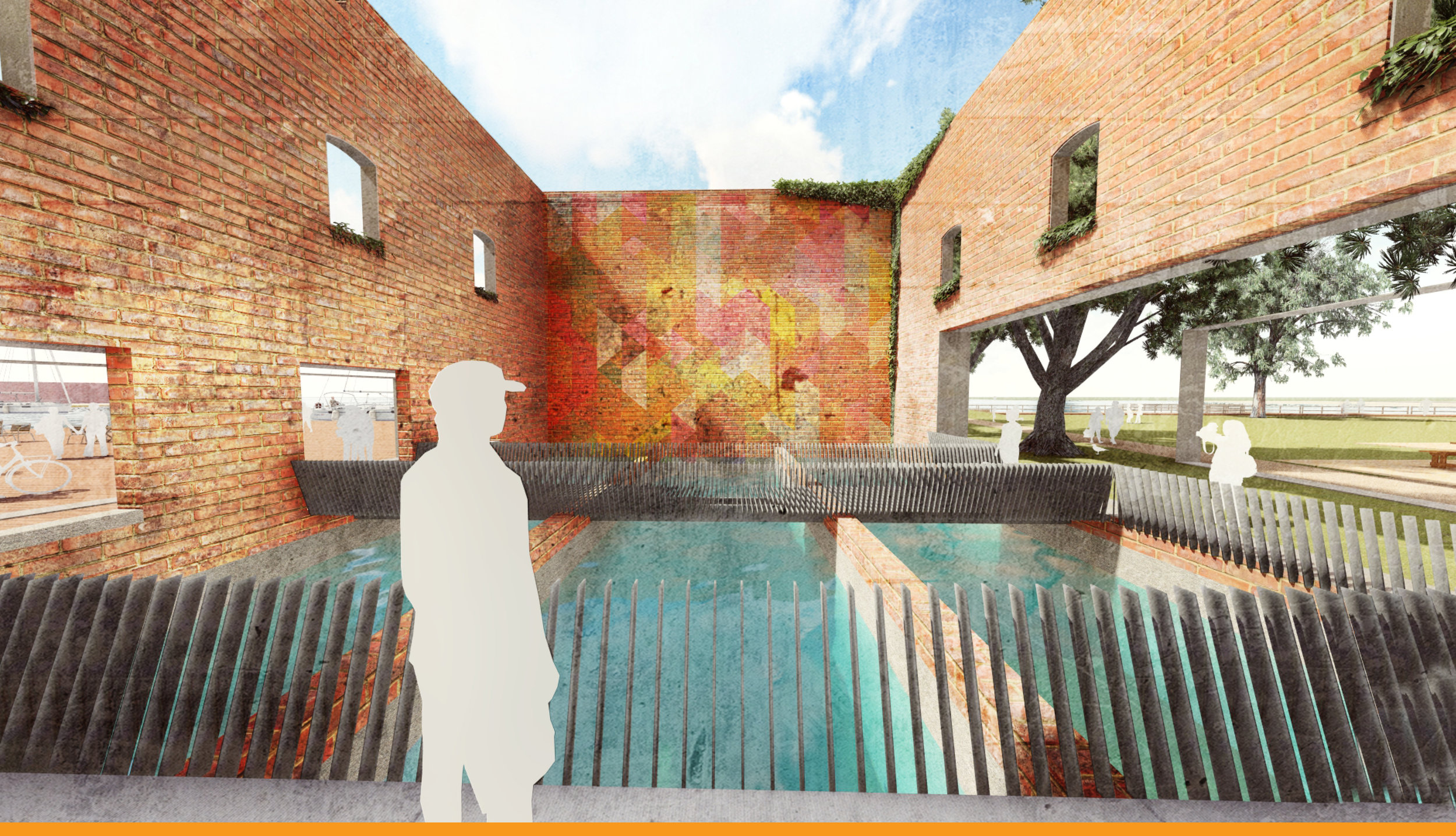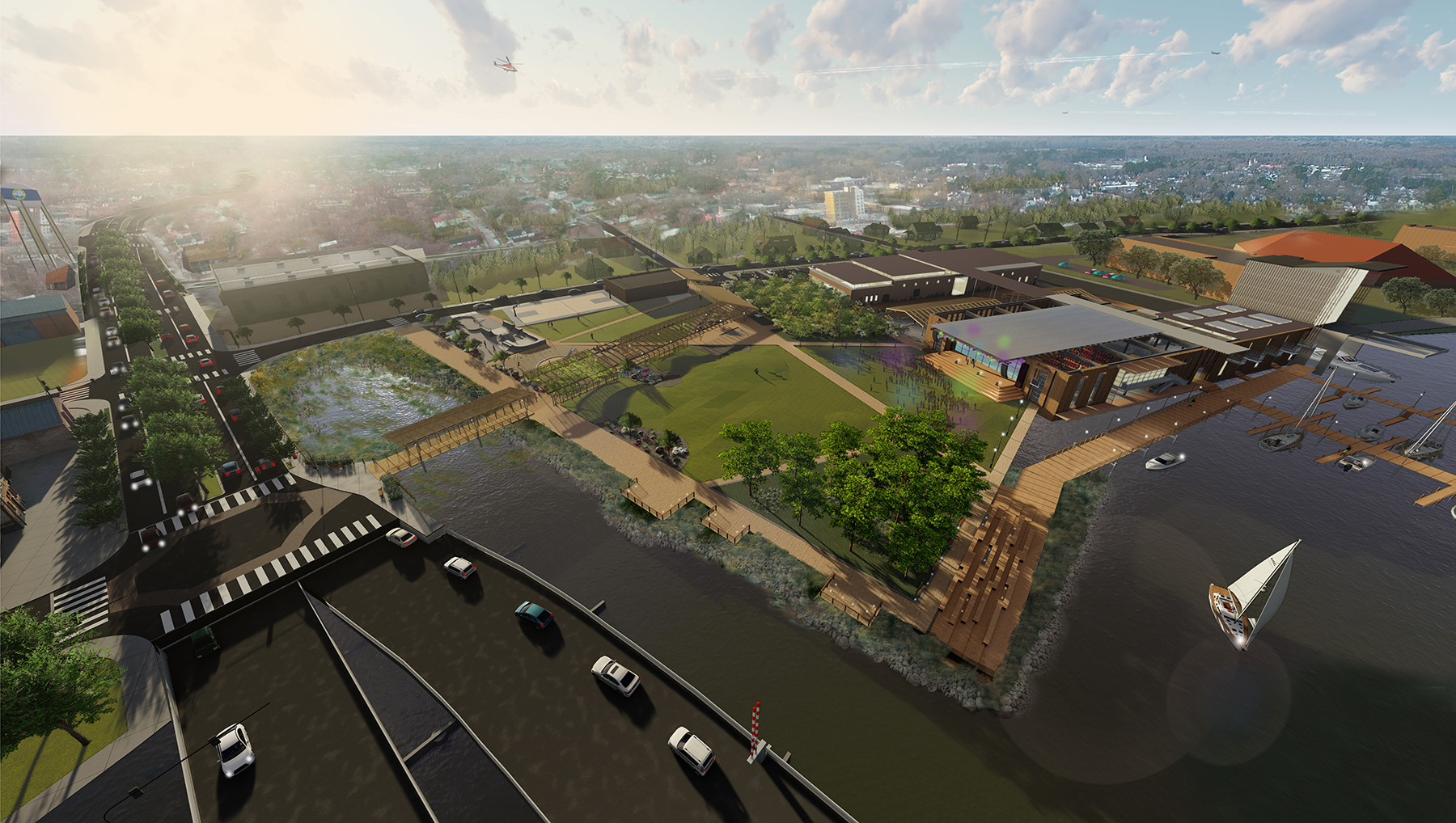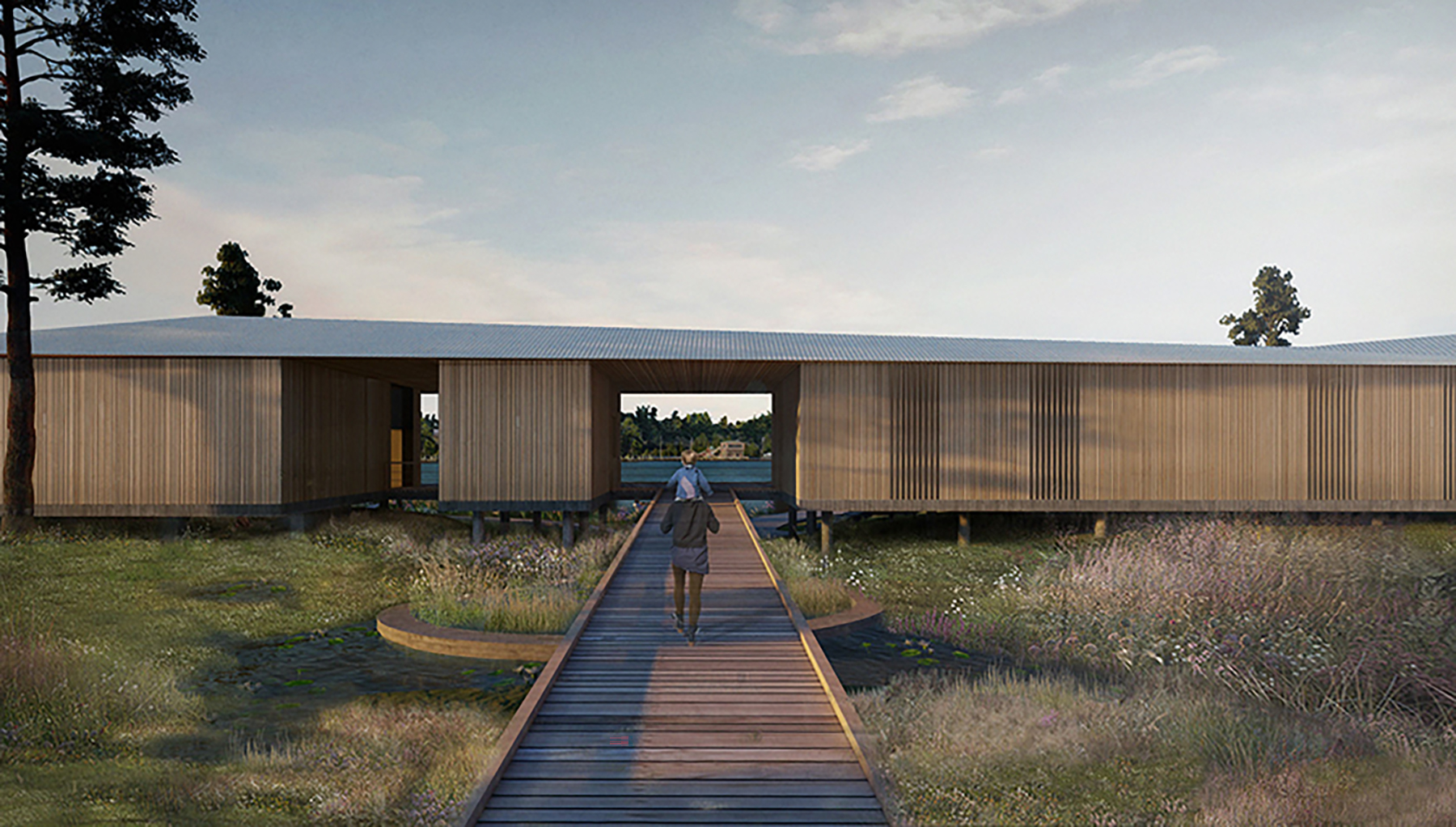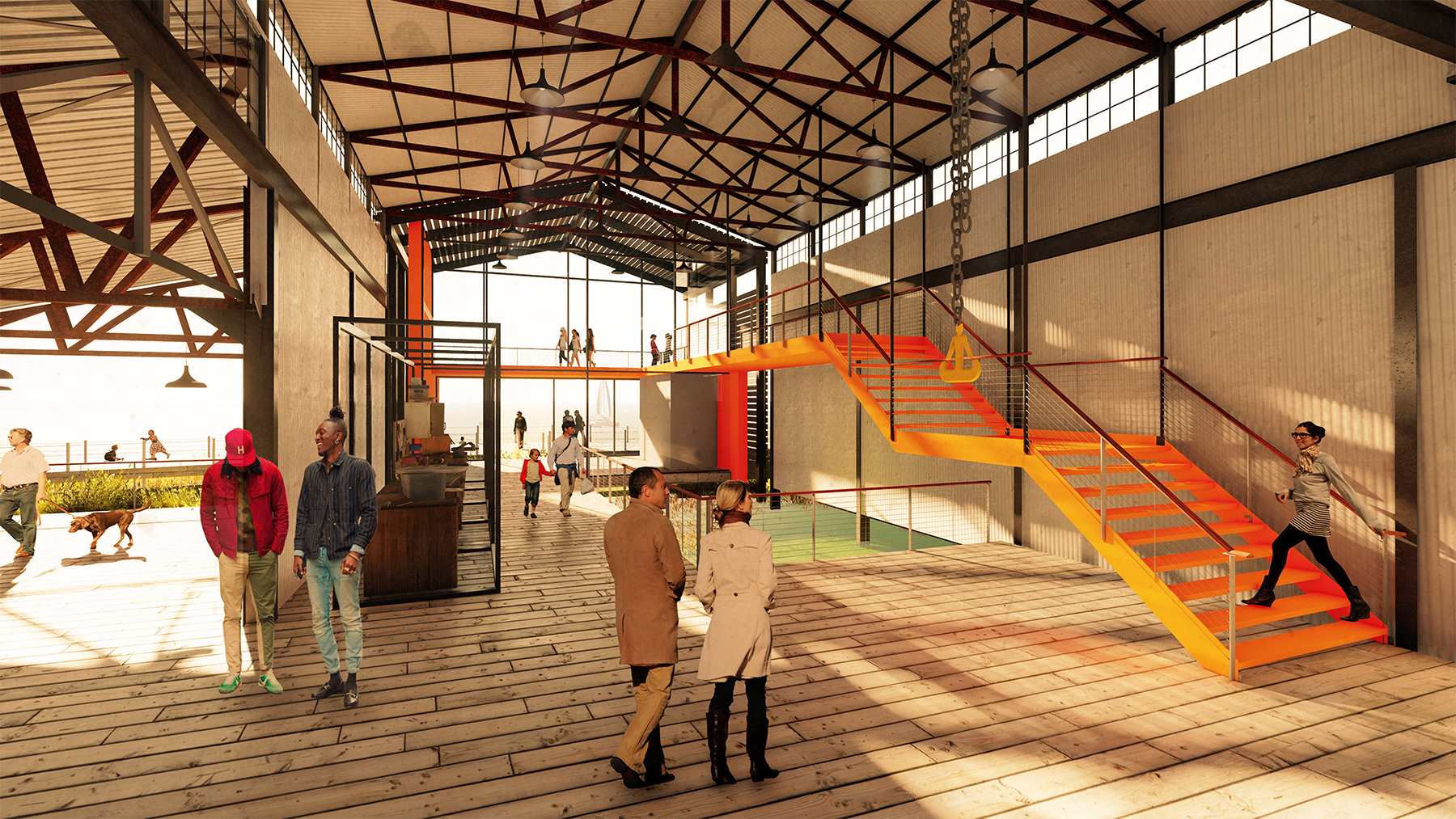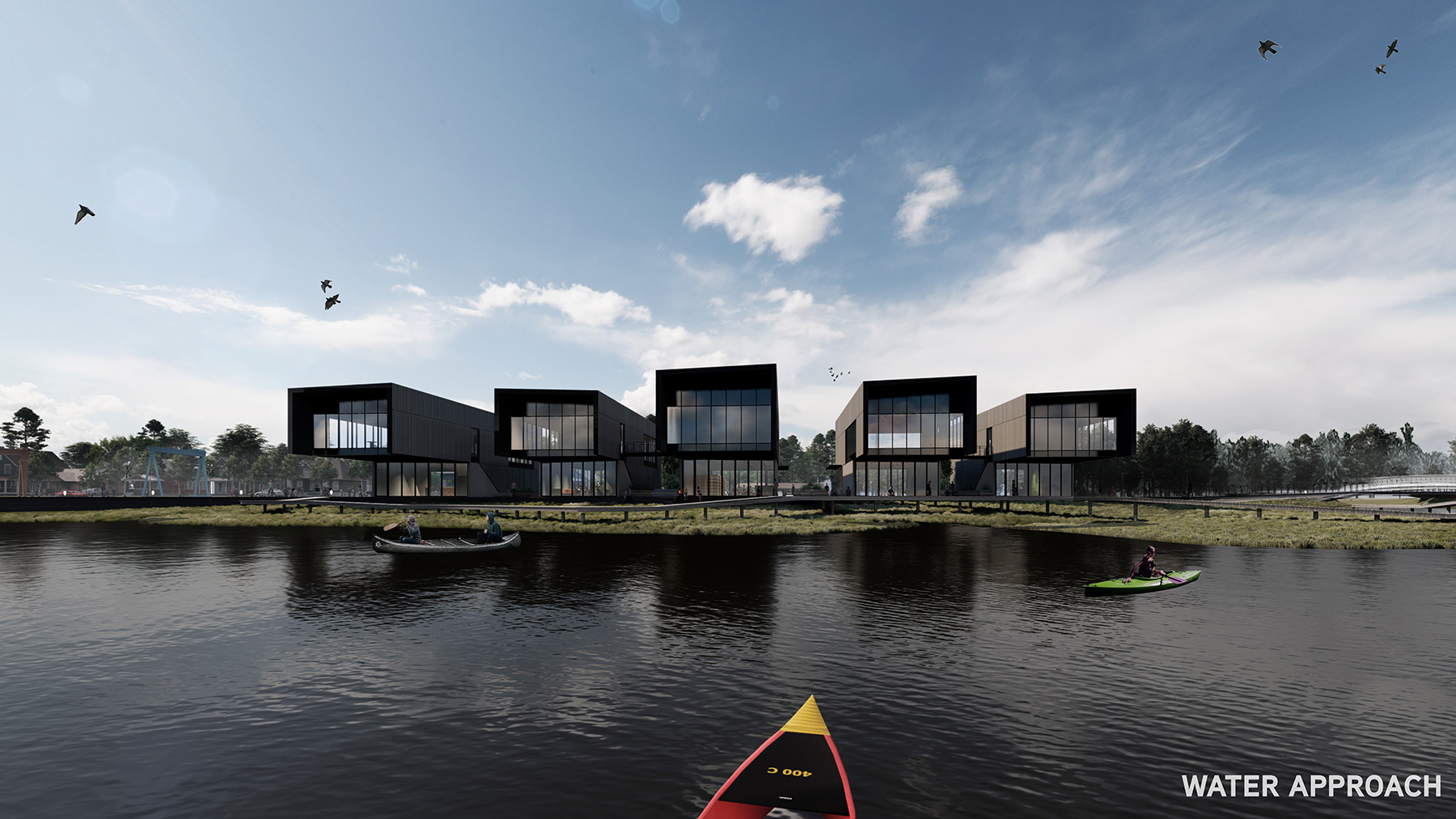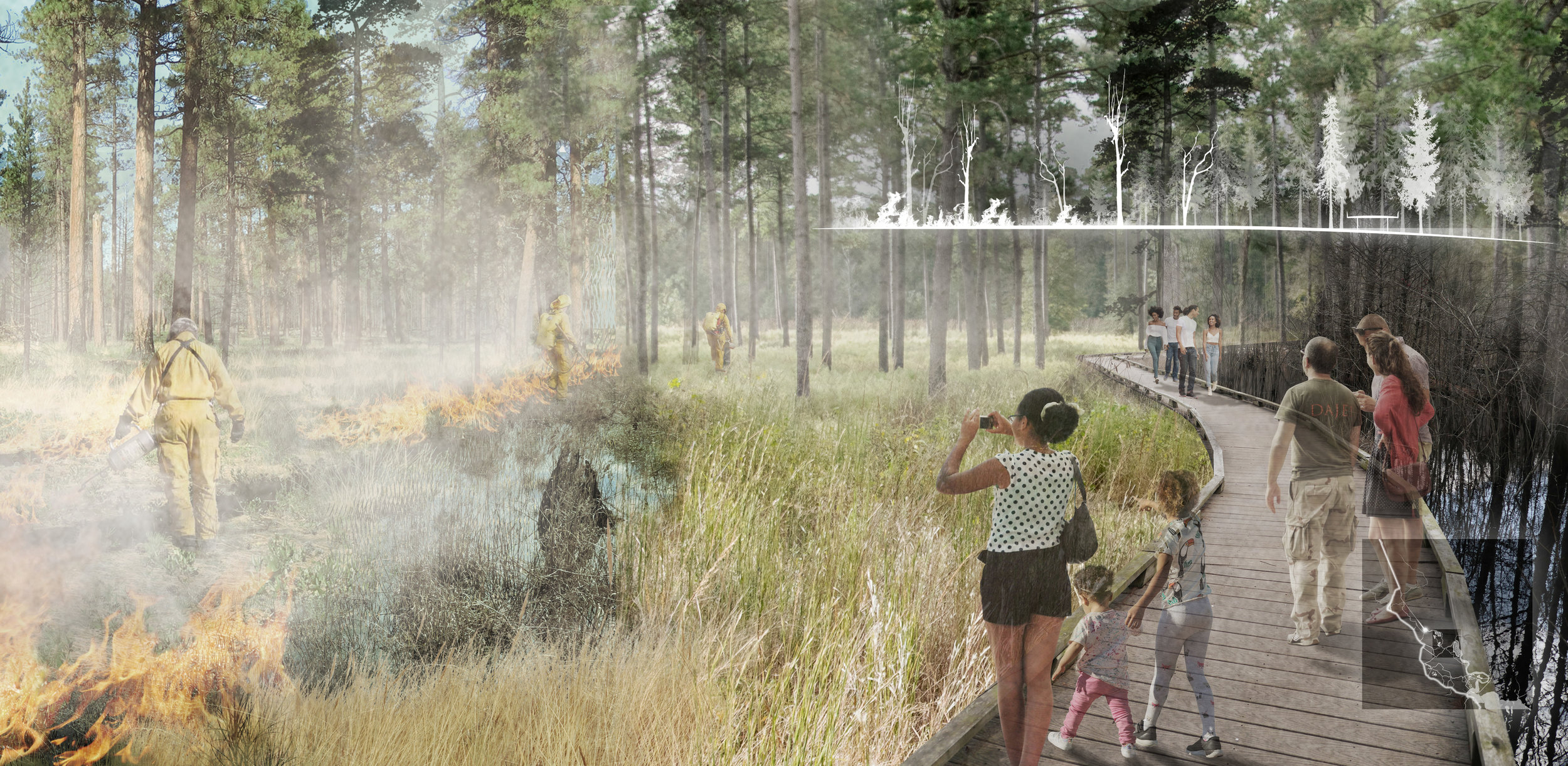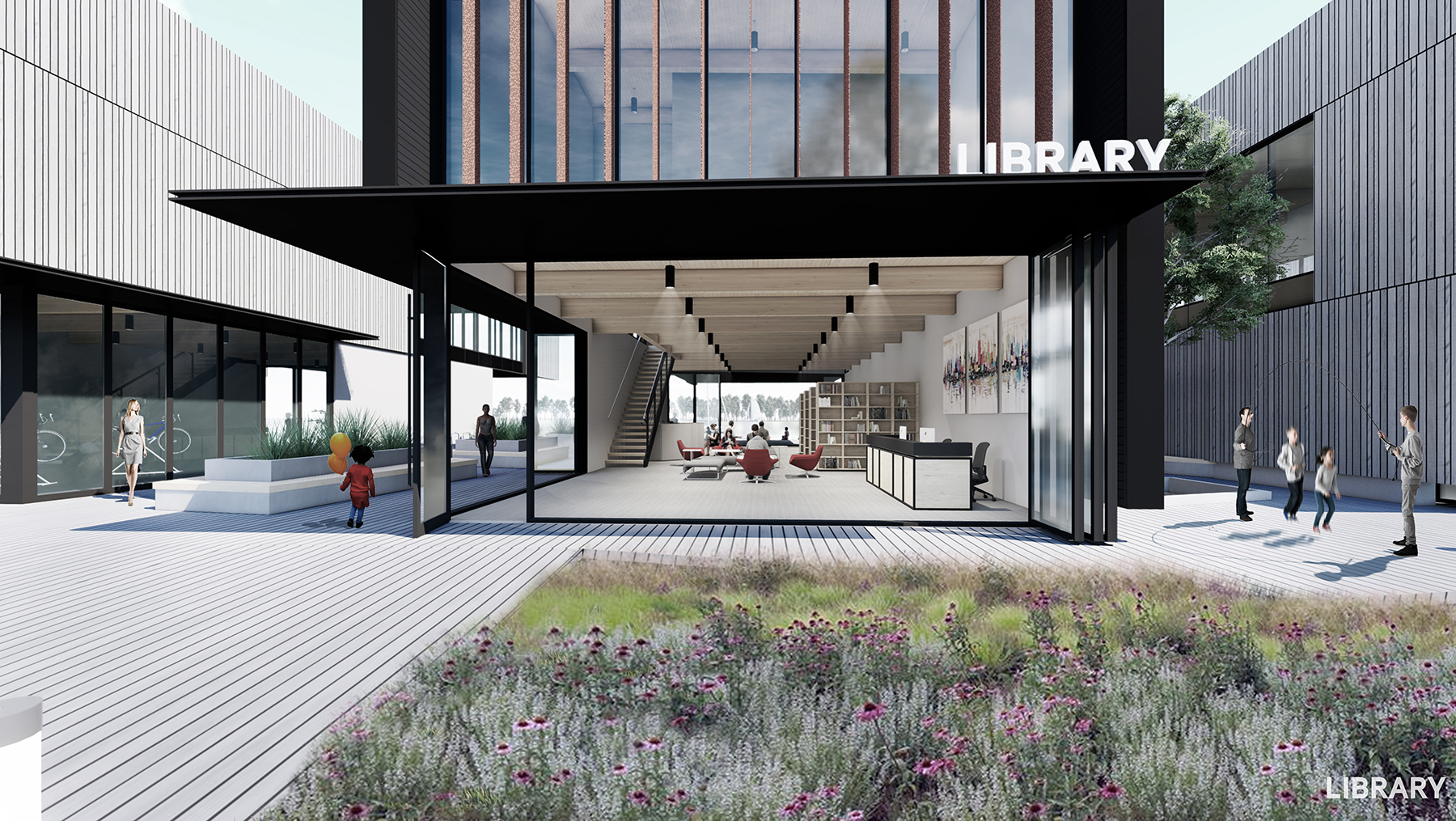Project Summary
CONTEXT
Elizabeth City, founded in 1794, is a coastal port town in northeastern North Carolina. It is situated along the Pasquotank River and is part of the greater Tidewater Region that includes Virginia Beach and Norfolk, Virginia.
The city flourished as a shipping center with direct waterway access to the Albemarle Sound. It has an established central business district, cultural amenities, and recreational facilities that are adjacent to the waterfront. The city is home to three colleges: Elizabeth City State University, Mid-Atlantic Christian University, and the College of the Albemarle. The regional population is approximately 64,000 people.
PROJECT OBJECTIVES
Elizabeth City recently commissioned a Waterfront Master Plan that seeks to enhance the city’s connection to the Pasquotank River. The city also developed a flood mitigation plan for the Charles Creek watershed that enters the Pasquotank adjacent to the central business district. The documents detail planning and design principles that seek to guide the waterfront’s transition “from work to recreation” and address topics such as economic and social conditions, historical data, community priorities, and development priorities.
The students who participated in the studio used these reports as a starting point for their own analysis and programming process. Students were also responsible for defining their own project statements, selecting their sites, and designing contextually appropriate interventions along the waterfront. Programmatic content varied based on students’ interests, including schemes that addressed a wide range of waterfront redevelopment opportunities such as green infrastructure, shipyard adaptive reuse, a maritime recreation center, urban parks, and commercial uses.
Sample Images
